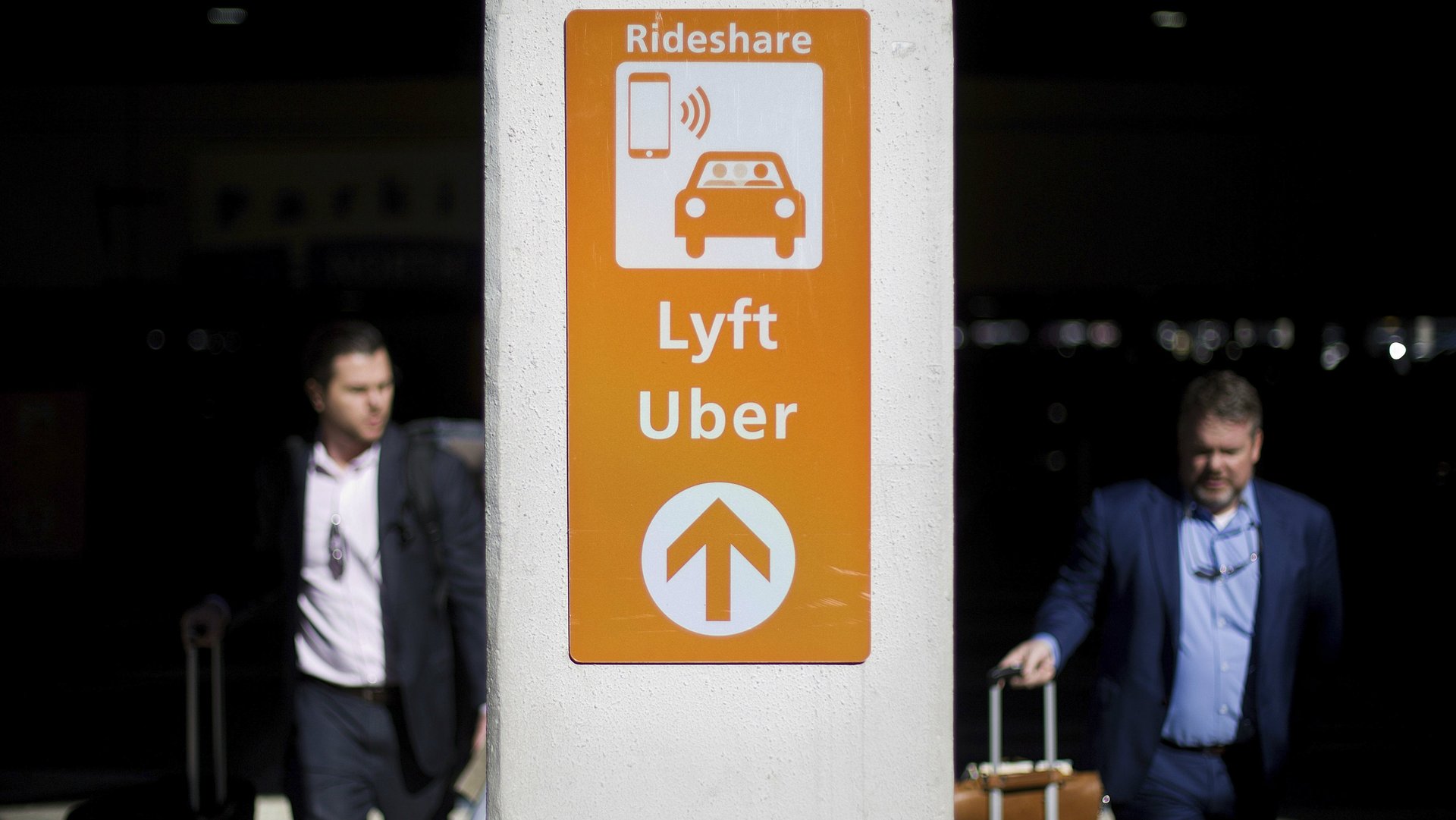Your Uber or Lyft ride could be the reason American airports get worse
It’s no secret that American airports are bad, especially compared to the rest of the world.


It’s no secret that American airports are bad, especially compared to the rest of the world.
What’s less well known is that one of the main reasons why has to do with the way most travelers arrive at them: by car. And in a world where travelers are increasingly foregoing personal vehicles, long-term parking, and taxis in favor of cheaper and more convenient options like Lyft and Uber, American airports are facing a big problem.
A new report from management consulting firm LEK examined the global impact of ride-sharing apps on airport revenue. The report relied on data from the Air Transport Research Society, as well as other sources. Prior to the widespread adoption of ride-sharing in 2012, the report notes that private cars, taxis, and rentals accounted for 80-90% of journeys to and from airports, with the remainder coming from dedicated rail lines to airports.
That’s changed. Ride-sharing apps are accounting for an ever-increasing percentage of business traveler expenditure, up from 8% in 2014 to 62% in 2017. In one example, Uber and Lyft went from 4% of drop-offs in 2014 at San Francisco International airport to nearly a third (29%) in 2017. In the process, the report notes, they also “reduced the share of every other mode—notably, not only taxis and rental cars, but also door-to-door vans and public transport.”
North America’s historic underinvestment in infrastructure and prevailingly car-centric society has made parking revenue historically a bulk of the revenue at airports (23% of total airport revenues 2016, compared to 7% for Europe and 3% for Asia). But the loss of long-term parkers is not the only problem; Uber and Lyft also generally pay less in access charges to pick up passengers at an airport—generally because their access to curbside drop off is less liberal than taxis—with an average of $2.90 per pickup compared to $3.50 for taxis.
It’s true that this change is affecting airports outside of America, too. But it’s particularly acute in the US because the country has resisted turning airports into profit-generating businesses with appealing dining and shopping options, as much of the rest of the world has done.
Whether it’s the privatized shopping mall approach of the London’s Heathrow or Amsterdam’s Schiphol, or the gleaming government-owned mega-hub like Singapore’s Changi and Doha’s Hamad airport, the rest of the world has managed to find a way to make their airports “appealing not to local travelers, but to affluent international travelers,” as aviation historian Janet Bednark told Quartz earlier this year. Meanwhile, in the US, less than 10% of non-aeronautical revenue comes from retail and concessions.
“If airports fail to act now,” the report notes, “they may face declining financial performance as [ridesharing] usage continues to increase.”